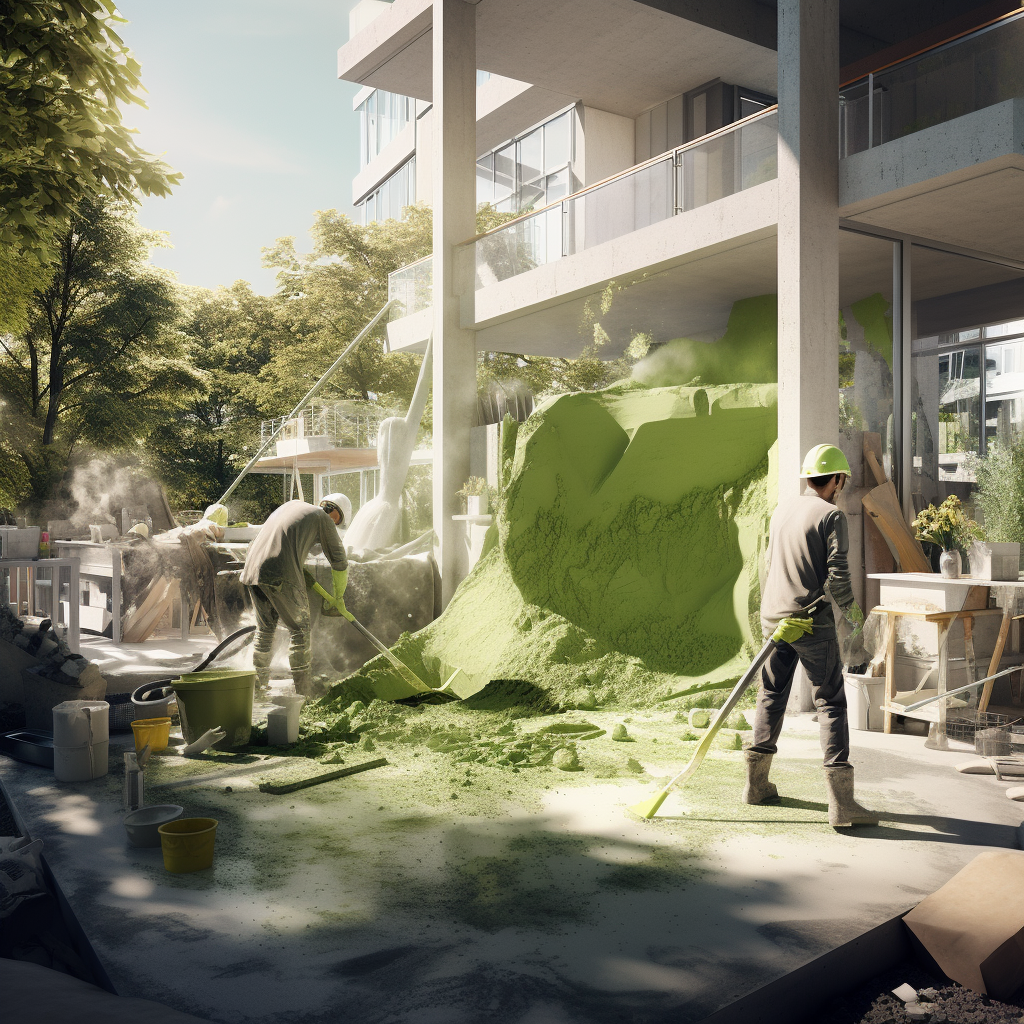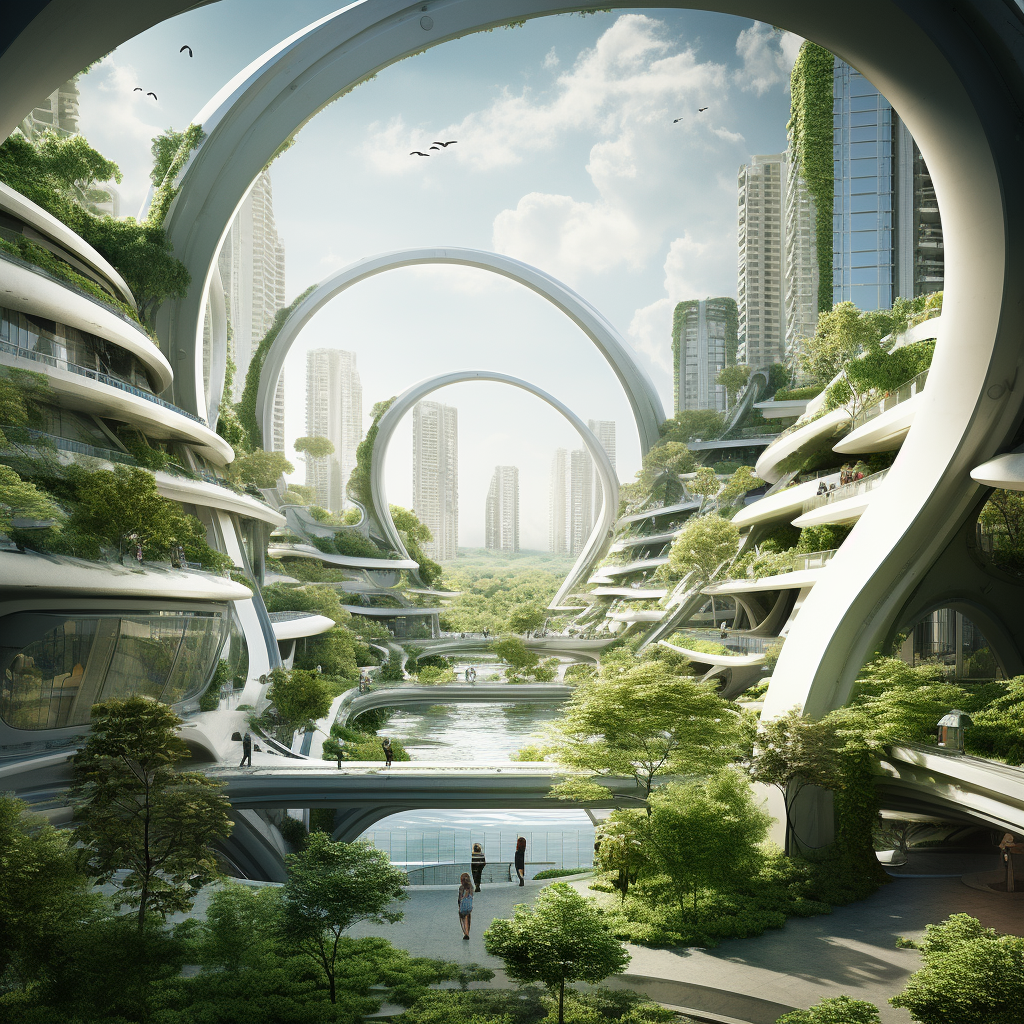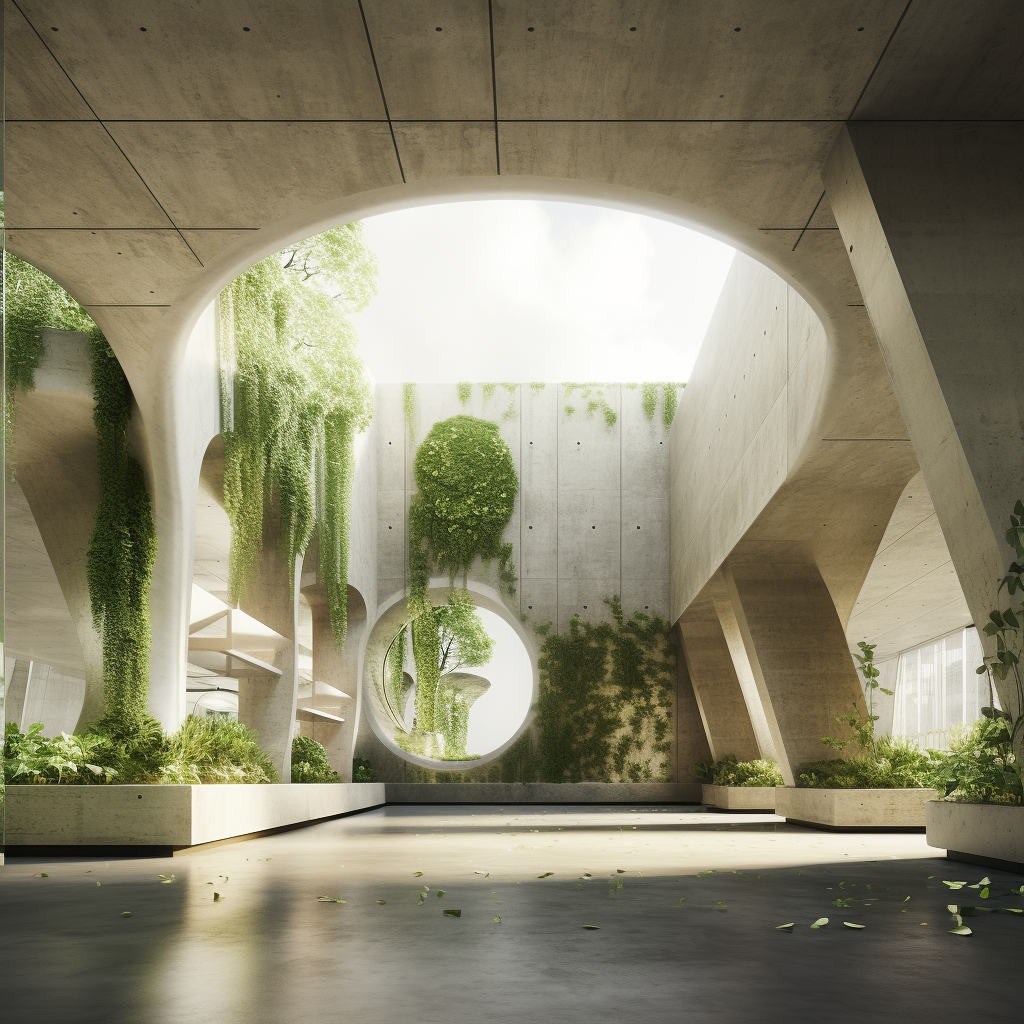Discover how eco-friendly concrete is paving the way for sustainable construction practices, blending environmental responsibility with modern building needs.
The Rise of Green Concrete
Green concrete is revolutionizing the construction industry by offering a sustainable alternative to traditional concrete. Understand the composition, benefits, and applications of this eco-friendly building material.
-
Composition:
The composition of green concrete is a central aspect of its environmental appeal, involving the use of recycled and waste materials. Fly ash, a byproduct from coal combustion in power plants, and slag, a residue from steel manufacturing, are commonly used as partial replacements for cement. These materials not only reduce the need for virgin cement, which is energy-intensive to produce, but also add beneficial properties to the concrete. Recycled aggregates, sourced from demolished concrete structures, further contribute to the sustainability of green concrete by reducing the demand for new, quarried aggregates.
Using these recycled materials in concrete mixtures not only addresses issues of waste management but also enhances the performance of the concrete. For example, fly ash can improve workability and durability, while slag can increase strength and resistance to chemical attack. This approach to concrete composition exemplifies a shift towards more sustainable and circular construction practices, where waste materials are repurposed to create high-quality, eco-friendly products.
-
Environmental Benefits:
Green concrete offers significant environmental benefits, key among them being the reduction of the carbon footprint associated with construction. By incorporating industrial byproducts like fly ash and slag, the amount of cement required in concrete is reduced, directly cutting down on carbon dioxide emissions produced during cement manufacturing. Additionally, the use of recycled aggregates in green concrete prevents the depletion of natural resources and reduces the environmental impact of quarrying activities.
Furthermore, the durability and longevity of green concrete mean that structures last longer, reducing the frequency of repairs and rebuilds, which in turn lowers the overall resource consumption and waste generation over the lifespan of a building. These environmental benefits align with global sustainability goals and make green concrete an attractive option for eco-conscious construction projects, contributing to a greener, more sustainable built environment.
-
Applications:
Green concrete finds a wide range of applications in modern construction, demonstrating its versatility and effectiveness. It is used in various types of projects, including residential and commercial buildings, infrastructure such as bridges and roads, and even in artistic and decorative applications. The use of green concrete is particularly prominent in projects aiming for LEED (Leadership in Energy and Environmental Design) certification, where its sustainable properties can significantly contribute to earning points in this green building rating system.
Moreover, the adaptability of green concrete to different construction requirements, from high-strength applications to lightweight and insulating forms, makes it a viable option for diverse building needs. Its role in sustainable construction is increasingly recognized, leading to its growing adoption in public and private sector projects alike. This trend underscores the shift towards more environmentally responsible building practices, with green concrete playing a pivotal role in shaping the future of sustainable construction.

Advances in Eco-Friendly Concrete Technologies
Delve into the latest advancements in eco-friendly concrete technologies that are setting new standards in sustainable construction.
-
Low-Carbon Cements:
The advent of low-carbon cement formulations marks a significant advancement in reducing the environmental impact of concrete. Traditional cement production is a major source of CO2 emissions, accounting for a significant percentage of global greenhouse gases. Innovations in low-carbon cements, such as Portland-limestone cement, which blends traditional cement with limestone, reduce the amount of clinker required and, consequently, the emissions associated with cement manufacturing. These new formulations maintain the strength and durability characteristics of traditional cement while substantially cutting down on carbon emissions.
Another innovative approach involves the use of alternative materials like calcined clay and ground granulated blast furnace slag in cement mixtures. These materials not only reduce the carbon footprint but also enhance the concrete’s performance in terms of durability and resistance to environmental factors. The development and adoption of low-carbon cements are crucial in the construction industry’s journey towards sustainability, offering a concrete solution to one of its most pressing environmental challenges.
-
Self-Healing Concrete:
Self-healing concrete represents a breakthrough in prolonging the lifespan of concrete structures while minimizing maintenance needs and environmental impact. This innovative technology allows concrete to repair its own cracks, a capability that significantly extends the structural integrity and durability of concrete infrastructures. The self-healing mechanism is typically activated by water entering the cracks, which then reacts with agents embedded within the concrete, such as bacterial spores or encapsulated polymers, to form new material that seals the cracks.
The benefits of self-healing concrete are manifold. It not only reduces the frequency and cost of repairs but also prevents the penetration of harmful substances that can lead to further degradation. This technology is particularly advantageous in hard-to-reach areas of large structures, such as underground pipes or high-rise buildings, where repairs can be challenging and costly. As self-healing concrete technology advances, it promises to play a key role in building more sustainable and resilient urban infrastructures.
-
Carbon Capture and Utilization:
The development of concrete capable of capturing and utilizing carbon dioxide during the curing process is a groundbreaking innovation in sustainable construction. This technology addresses the issue of carbon emissions head-on by turning concrete into a carbon-absorbing material. During the curing process, carbon dioxide is injected into the wet concrete mix, where it reacts chemically to form solid carbonates, thereby becoming permanently embedded in the concrete.
This carbon capture and utilization (CCU) approach not only reduces the carbon footprint associated with concrete production but also enhances the strength and durability of the finished product. The potential of CCU concrete is immense, offering a dual benefit of building construction and carbon sequestration. As this technology continues to develop and gain traction, it could revolutionize the construction industry, making concrete a key player in global efforts to reduce atmospheric carbon levels.

Challenges and Future Directions
Examine the challenges faced in the adoption of eco-friendly concrete and predict the future trajectory of this sustainable construction material.
-
Overcoming Barriers:
While green concrete presents a sustainable alternative, its widespread adoption faces several challenges. One primary barrier is cost. Initially, green concrete can be more expensive than traditional concrete due to the higher cost of sourcing and processing recycled materials. However, this is often offset by its long-term benefits, such as durability and lower maintenance costs. Another challenge is availability. Not all regions have easy access to the industrial by-products required to produce green concrete, which can limit its use in certain areas.
Market acceptance is also a hurdle. There’s a need for more education and awareness among construction professionals and clients about the benefits of green concrete. Misconceptions about its performance compared to traditional concrete can hinder its acceptance. Overcoming these barriers requires concerted efforts from manufacturers, policymakers, and the construction industry to promote the benefits of green concrete and invest in its development and distribution.
-
Sustainable Construction Practices:
Integrating green concrete into construction practices is essential for a sustainable future. Its use directly contributes to reducing the construction industry’s environmental impact, one of the largest global carbon emitters. By incorporating recycled materials and reducing cement content, green concrete lessens the depletion of natural resources and lowers greenhouse gas emissions. This aligns with global sustainability targets and the growing demand for environmentally responsible construction practices.
Beyond its environmental benefits, green concrete also supports sustainable construction through its enhanced durability and potential for creating energy-efficient buildings. These qualities not only meet the functional requirements of modern construction but also cater to the increasing environmental consciousness among clients and end-users. The integration of green concrete is a vital step towards building a more sustainable and responsible construction industry.
-
Future Innovations:
The future of green concrete is poised for exciting innovations that could further revolutionize the construction industry. Research is ongoing into new types of eco-friendly binders that could replace traditional cement, potentially leading to even lower carbon emissions. Another area of development is the enhancement of the self-healing capabilities of concrete, which would further reduce maintenance needs and extend the lifespan of structures.
Advancements in material science could also lead to the creation of lighter, stronger, and more versatile forms of green concrete, expanding its applications. Additionally, the integration of smart technology within green concrete, such as embedded sensors for monitoring structural health, could open new avenues in intelligent and sustainable building designs. These innovations hold the promise of making green concrete not just an alternative, but the preferred choice in future construction projects, driving the industry towards greater sustainability and environmental stewardship.


Comments